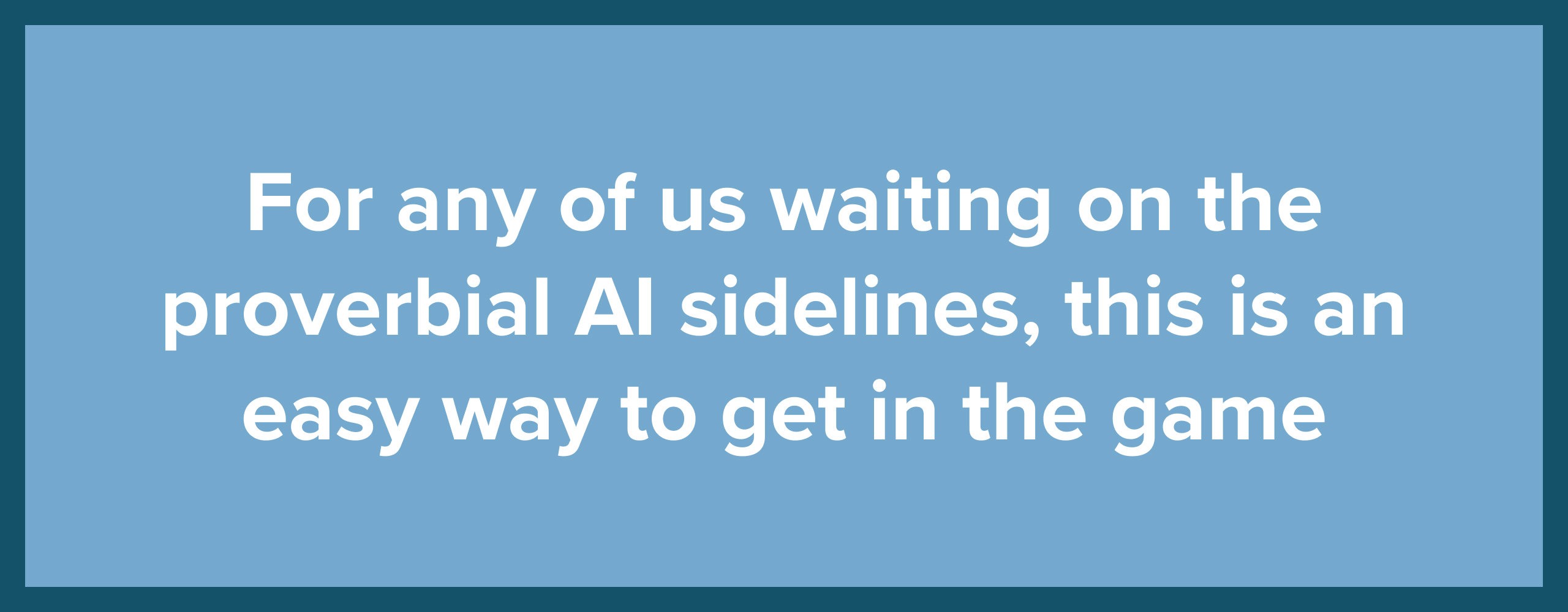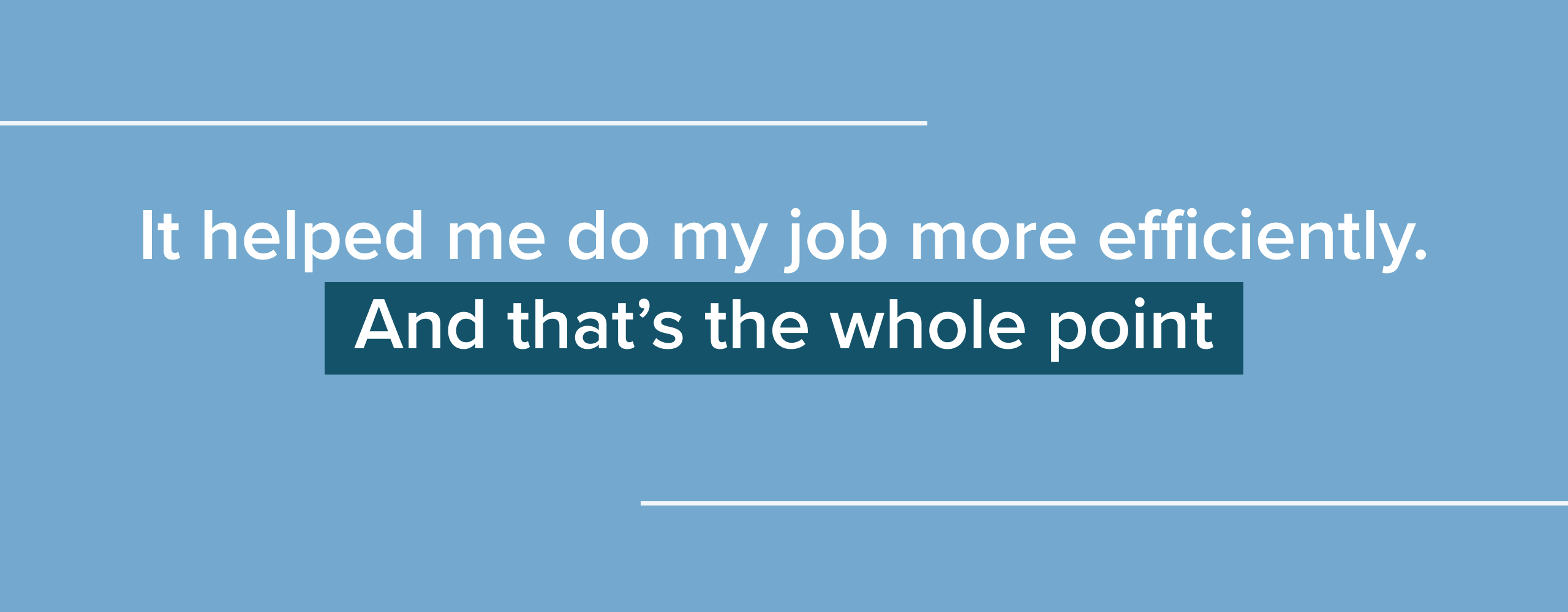Subscribe now and get the latest podcast releases delivered straight to your inbox.
The other day, a client sent along a Word document filled with all the text they were going to put on their new service page.
This was a detailed run-through of what they sell, and the document was pages and pages long.
Their question to me was pretty simple: Does this cover everything we need to?
But the challenge underlying that question was way more complex — and familiar to all of us. We need our messaging to be right. But when we’re close to something, when we live in it day in, day out, it’s damn near impossible to see it with fresh eyes.
This, to me, was a perfect application for AI, which always has fresh eyes.

And for any of us waiting on the proverbial AI sidelines, this is an easy way to get in the game.
Let me explain exactly what I did.
Practical AI application
For a lot of professionals, AI still remains more of a toy than a tool. Something we use here and there. But maybe we find ourselves impressed but not thrilled with the results, so it stays on the back burner.
But this document from the client was a perfect real-world use case.
Here’s what I did: I opened Chat-GPT4 (I use the paid version, which is $20 per month), and I got really specific about what I wanted. I asked the tool to read the text that the client had written and look for holes and oversights that a new visitor might encounter. Then I pasted in the huge block of text and hit return.
The result was exactly what I needed: An objective list of what was missing in the copy they’d written. I was able to bring this list to the client as we looked through the document together.
Not everything was useful, but in this kind of situation, I’d rather have a list of too many oversights instead of a list of too few.
4 principles to guide your AI
Wharton professor Ethan Mollick, who has become a trusted visionary in the AI revolution, recently shared four principles you should bring to any work you do.
Whatever your opinion, they’re useful to consider.
- Use AI for everything you can. Tools are proliferating. New ones come out every day. We should always be on the lookout for novel ways to utilize AI’s power.
- Be the human in the loop. AI has astonishing abilities — and sobering limitations. It is not a human with judgment and character. You need to keep humanity in whatever you’re doing.
- Treat the AI like a human and tell it who it is. AI can be whoever you want it to be, but only if you’re clear. The better the input, the better the output.
- Remember, the AI you’re using today will be the most rudimentary AI you ever use. It’s true. Things are advancing so quickly that what’s new today will be outdated next month. Think about early cell phones or early airplanes. They seemed high-tech at the time, but the advancements came swiftly. Same thing here.
I’ve kept Mollick’s ideas in mind as I’ve done my own exploration.
Let’s take the example above — the copy the client shared — and see how these principles apply.
- Use AI for everything you can. Yes. This was a new application for me. I’d never done this before with AI, but I knew that if I read through the whole webpage copy doc, I’d likely miss something, so I figured I’d give AI a shot. If we want to learn, we have to keep trying.
- Be the human in the loop. This is a huge one. Not all the suggestions Chat-GPT came up with were good. Some were valuable; many were useless. As the human in the loop, I was able to tell the difference. But I was glad to have a comprehensive list that I could work with.
- Treat the AI like a human and tell it who it is. Too often, people see AI tools as question-and-answer tools. We’re stuck thinking of it as a smarter Google or chatbot. I got more out of my prompts because I was detailed and specific. I treated the whole thing as a conversation, not a one question, one answer exchange.
- Remember, the AI you’re using today will be the most rudimentary AI you ever use. I realize there are still big limitations here. The AI can’t watch and digest video content. It can’t think beyond its abilities. It’s not able to really contextualize. But that doesn’t matter right now. Today, it helped me be better at my job.
I used Mollick’s suggestions. I applied AI to a real-world need, kept his principles in mind, and out came valuable results.

It wasn’t finished work I could publish somewhere — but it helped me do my job more efficiently. And that’s the whole point.
Real-world applications
So, how can you use this example to help your own business? Run your own website copy through ChatGPT and have it look for holes. Then, copy 10 competitors’ websites and do the same, pasting them in one at a time.
Find the topics that are missing from your industry, and use this information to inform your own content. If there’s a knowledge gap, there’s likely a trust gap.
If ChatGPT shows you that no businesses are talking about X, and buyers want to know about X, you can be the one to take the lead. You can be the one to answer the question. You can be the one to win the trust in the marketplace.
For those 10 competitors. Do any of them explain how pricing works? You can. Do any of them talk about the limitations of certain services? You can.
Use the tools, find the gaps, be the solution.
Free: Assessment
